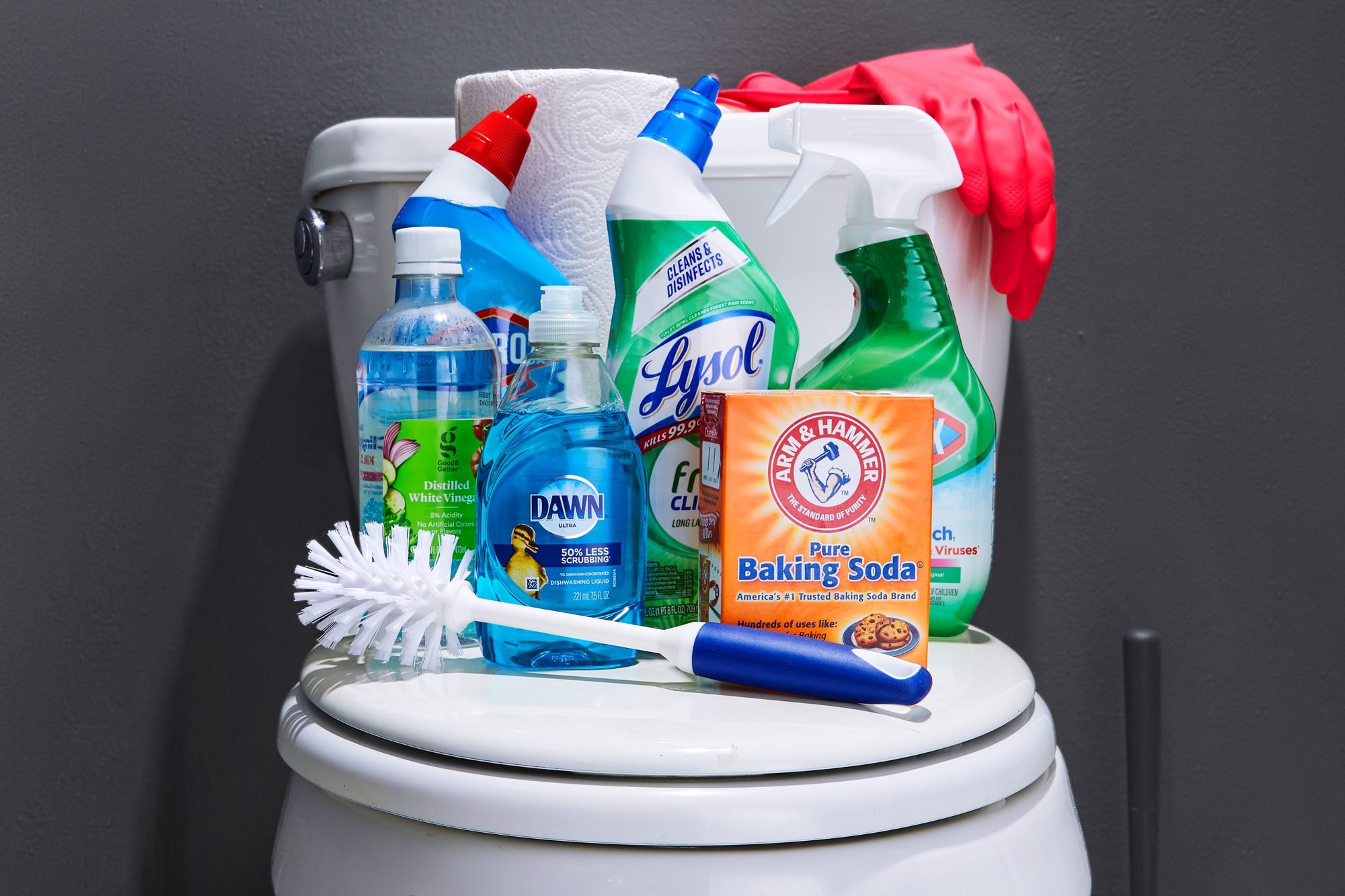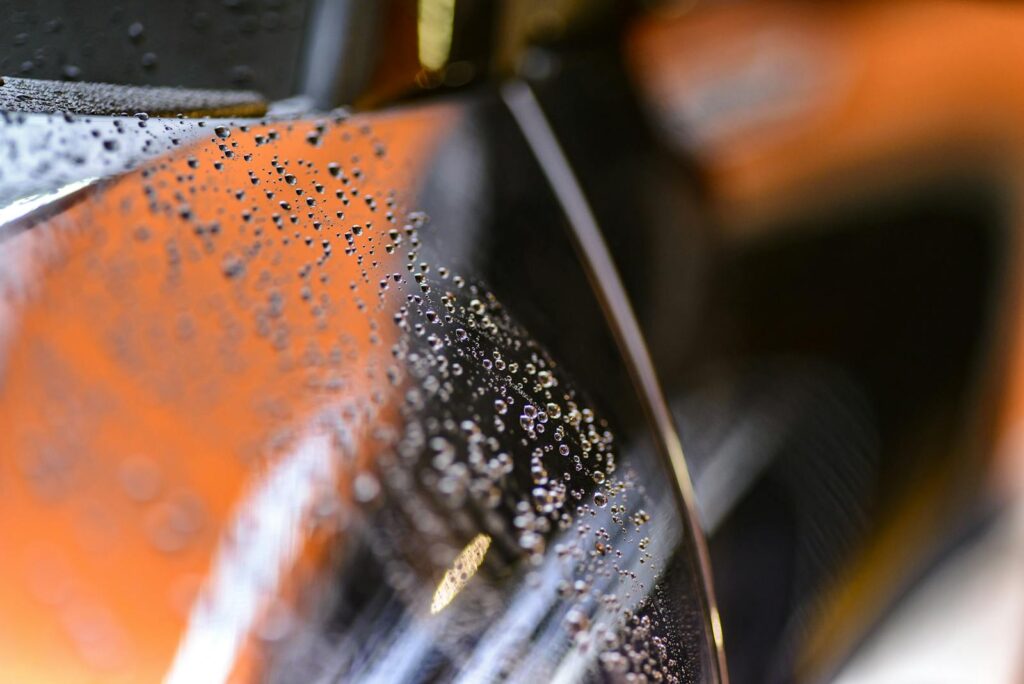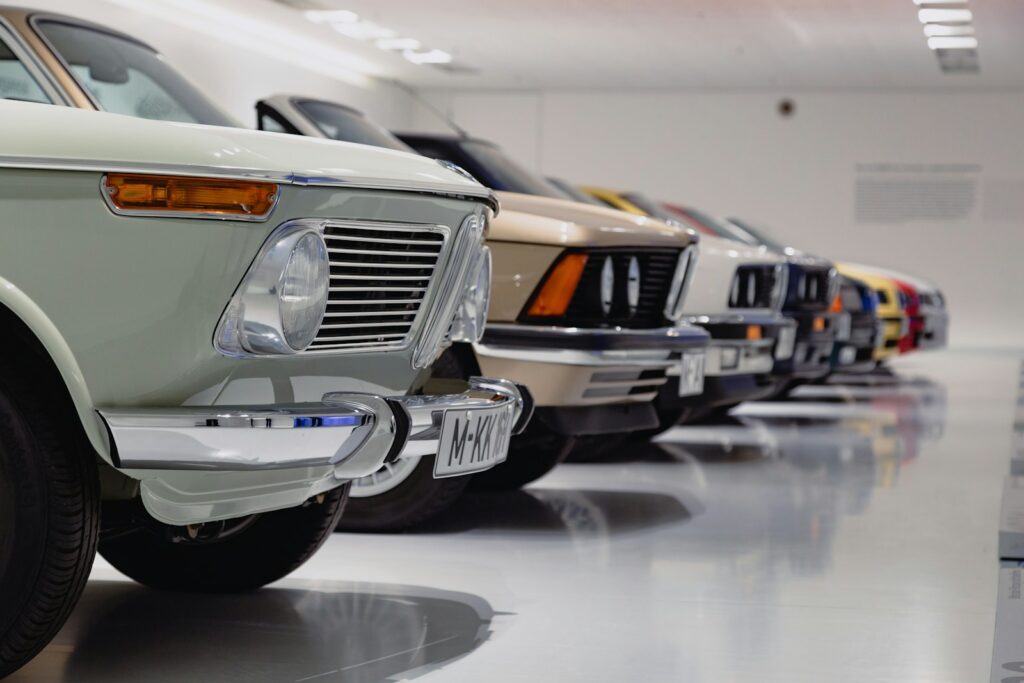
In today’s dynamic automotive market, the perceived value of your vehicle plays an increasingly significant role, not just for your driving pleasure but crucially when it comes time to sell or trade it in. A car that presents itself as clean, meticulously maintained, and visually striking doesn’t merely draw in a larger pool of potential buyers; it also empowers you to command a substantially higher resale price. This isn’t just about superficial beauty; it’s about signaling a deeper level of care and attention that extends to the vehicle’s mechanical well-being, assuring prospective owners of its reliability.
We all know that first impressions are everything, and nowhere is this truer than in the automotive sales arena. Buyers often make an instinctive judgment about a vehicle within mere seconds of laying eyes on it. A car’s appearance serves as a powerful, non-verbal testament to its overall upkeep, sparking an emotional connection and building immediate trust. In a competitive market, a car that truly shines will unequivocally stand out amidst a sea of less-than-perfect counterparts, prompting curious buyers to take that crucial next step: a closer inspection or, even better, a test drive.
This in-depth guide is designed to empower you with the practical, actionable knowledge needed to elevate your car’s value through strategic detailing. We’ll delve into each critical step, providing clear, authoritative advice that you can apply, whether you’re a seasoned DIY enthusiast or considering professional assistance. By focusing on these key areas, you’ll not only enhance your car’s aesthetic appeal but also solidify its market standing, ensuring you get the most out of your investment when the time comes to part ways.
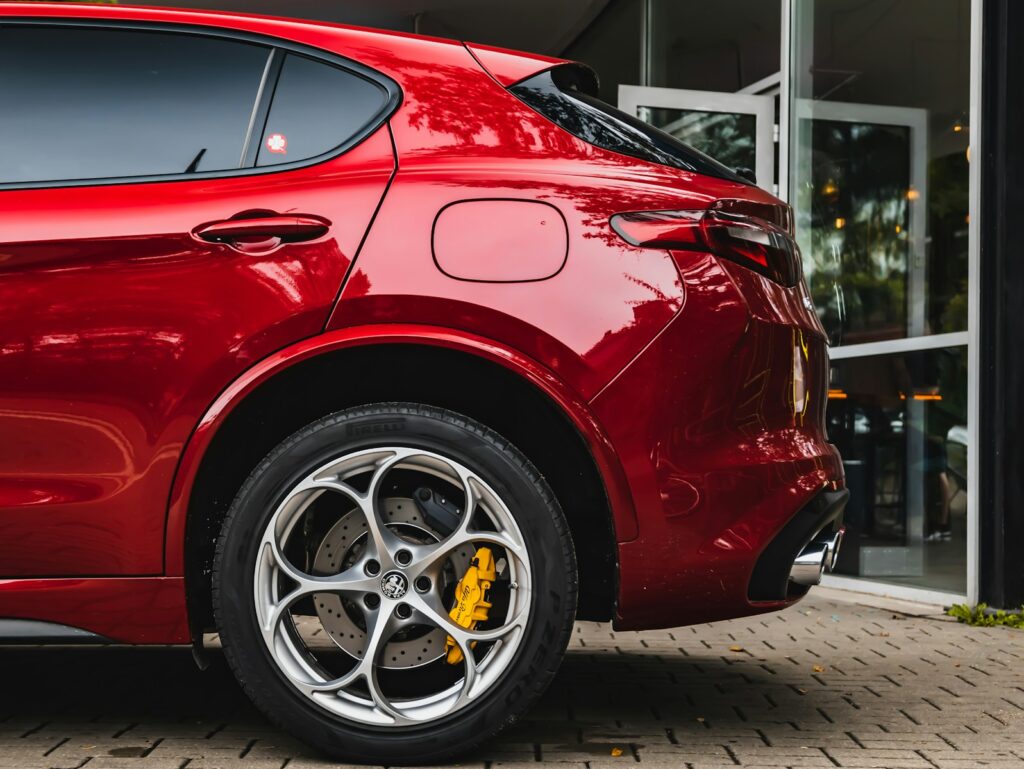
1. **Professional Detailing: The Foundation of Value**When we talk about professional detailing, we’re discussing an undertaking far more extensive and impactful than a routine car wash. This is a comprehensive, meticulous process aimed at restoring your vehicle’s appearance, both inside and out, to a condition that rivals or even surpasses its showroom state. This painstaking attention to every single detail is a game-changer, profoundly boosting your car’s appeal and, as a direct consequence, its ultimate resale value.
A typical professional detailing service is incredibly thorough, often encompassing a detailed exterior wash combined with a clay bar treatment to effectively purge the paint of embedded contaminants. Beyond the initial cleaning, it involves multi-stage polishing and waxing, which work in tandem to revive the paint’s original luster and provide a robust protective shield. Inside, a deep cleaning session targets carpets, upholstery, and leather surfaces, while even the engine bay receives specialized cleaning and dressing, ensuring no area is overlooked.
Engaging in regular professional detailing is a strategic investment that pays dividends. It ensures your car consistently looks its absolute best and, more importantly, actively mitigates long-term damage stemming from pervasive environmental aggressors. Factors such as harmful UV rays, destructive acid rain, and stubborn road grime can relentlessly attack your vehicle’s finishes. This preservation of your vehicle’s pristine appearance directly translates into sustained value over its lifespan, making it a compelling asset for future buyers.
Read more about: Decoding Luxury Car Ownership: The Critical Role of Specialized Maintenance for High-End Vehicles

2. **Building Your Essential Detailing Toolkit**Before embarking on your detailing journey, assembling the correct array of tools and products is not merely a suggestion; it’s an imperative for achieving efficient work and professional-grade results. Think of your detailing arsenal as the foundation for success, where quality tools make all the difference in achieving that coveted showroom finish. Without the right equipment, you risk wasting time, effort, and potentially damaging your vehicle’s surfaces.
Your essential toolkit should include specific items designed for each phase of detailing. For washing, the two-bucket method is non-negotiable, requiring two dedicated car wash buckets: one for soapy water and another for rinsing your mitt. Paired with this, a pH-balanced quality car shampoo is crucial to cleanse effectively without stripping existing protective layers. Microfiber wash mitts and drying towels are paramount for preventing dreaded swirl marks and scratches, ensuring a gentle yet thorough clean.
For paint preparation, a clay bar or clay mitt is essential for removing embedded contaminants that a regular wash can’t touch. To address surface imperfections, you’ll need polish and compound, specifically formulated for paint correction. Protection comes in the form of wax, sealant, or ceramic coating, each providing a protective layer and enhancing gloss. Don’t forget dedicated wheel cleaner and brushes for tackling stubborn brake dust, interior cleaners like upholstery shampoo and leather conditioner, a powerful vacuum with attachments for tight spaces, and ammonia-free glass cleaner to safeguard tints.
Read more about: Decoding Mexico’s Financial Backbone: A Deep Dive into the NIF for Savvy Professionals
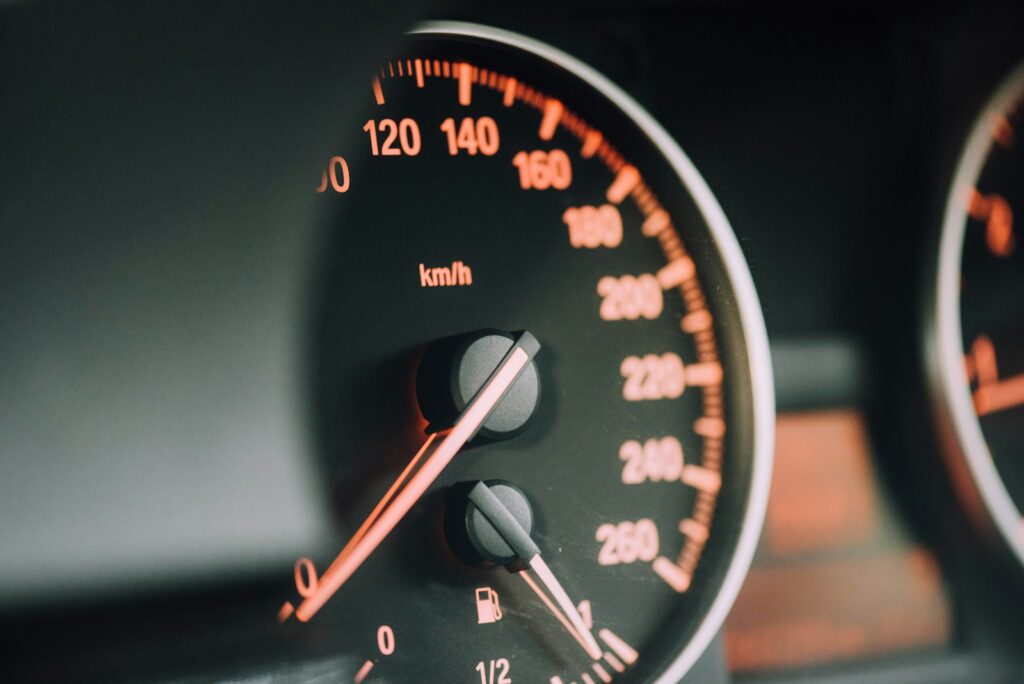
3. **Mastering the Exterior Wash and Decontamination**Commencing with your car’s exterior is the logical starting point, as it’s undeniably the first element potential buyers will perceive. A proper exterior detailing regimen transcends a mere surface-level cleaning; it is fundamentally about meticulously restoring the vehicle’s inherent shine, fortifying its paintwork with robust protection, and ultimately presenting an automobile that exudes an undeniable sense of being exceptionally well-maintained. This initial stage sets the crucial tone for the entire detailing process, directly influencing that vital first impression.
The initial phase, known as pre-rinsing, involves utilizing a hose or a pressure washer to thoroughly dislodge and remove any loose dirt and debris from the car’s surfaces. This pivotal step is designed to preemptively loosen ingrained grit that could otherwise act as an abrasive, leading to unsightly scratches on your paint during the subsequent washing process. Following this, a generous application of car shampoo, creating a thick, luxurious lather, is allowed to dwell for a minute or two; this allows the specialized formula to effectively soften and loosen any stubborn, stuck-on dirt, preparing it for removal.
Employing the two-bucket method is a cornerstone of effective and scratch-free washing. One bucket is explicitly filled with your soapy water mixture, while the second contains clean water designated solely for rinsing your wash mitt. The technique mandates that after washing each individual section of the car, you meticulously rinse your mitt in the clean water bucket before reloading it with fresh suds. This systematic approach is paramount, as it vigilantly prevents contaminants from being transferred back onto your paintwork, thereby significantly minimizing the risk of inflicting swirl marks and scratches. Even after this thorough wash, minute contaminants can stubbornly persist. This is where a clay bar treatment becomes indispensable. Utilizing a clay bar or clay mitt meticulously lifts and removes embedded particles such as insidious iron deposits or resilient tar. The resultant surface will be remarkably smooth to the touch—a non-negotiable prerequisite for achieving a truly professional-grade finish. The final crucial step is drying, where a microfiber drying towel or a dedicated car dryer is employed to meticulously remove all water, effectively preventing the formation of unsightly water spots. Whenever feasible, executing this step in a shaded area is highly advisable to circumvent rapid water evaporation, which can exacerbate water spotting.
Read more about: Unlock the Secrets: 15 Essential Ways to Keep Your Luxury Car Looking Showroom New
4. **Achieving Flawless Paint Correction and Protection**Even if your car’s paint appears “acceptable” at a casual glance, a more discerning, closer inspection often brings to light a myriad of imperfections: subtle swirl marks, minor scratches, and areas of oxidation. Proactively addressing these seemingly small issues is not merely an aesthetic choice; it’s a critical step that can dramatically enhance the overall appearance of your vehicle, significantly contributing to its perceived value and appeal. Ignoring these flaws detracts from the car’s potential, while rectifying them transforms its visual presence.
Paint correction is a specialized process that meticulously removes these imperfections. For deeper swirl marks or more pronounced light scratches, a more aggressive compound is typically employed in conjunction with a dual-action polisher. This powerful combination works to carefully abrade away a microscopic layer of clear coat, effectively leveling the surface and making the blemishes vanish. After the initial compounding, the next stage involves switching to a finer polish. This refining step is crucial for restoring the paint’s inherent clarity, amplifying its depth, and bringing forth a brilliant, mirror-like gloss that truly makes the vehicle pop.
Once the paint surface is corrected and gleaming, the final, indispensable step is to apply a protective layer. This can take several forms, each offering distinct benefits. A natural carnauba wax provides a warm, rich shine but generally necessitates more frequent reapplication due to its less durable nature. Alternatively, a paint sealant, typically polymer-based, offers extended protection, often lasting between 6 to 12 months, and provides a durable barrier against environmental elements. For the ultimate in durability and an unparalleled high-gloss finish, a ceramic coating stands out as the most advanced option, capable of protecting your vehicle’s appearance for years with appropriate maintenance. A meticulously polished and robustly protected exterior immediately conveys the impression of a vehicle that has been cherished and rigorously maintained, enabling potential buyers to fully appreciate its true, revitalized beauty.
Read more about: Avoid the Pitfalls: The 14 Most Common Mistakes People Make When Installing Aftermarket Car Stereo Systems

5. **Revitalizing Wheels and Tires**It’s a common oversight, but allowing dirty wheels and faded, neglected tires to persist on your vehicle can severely undermine its overall curb appeal, irrespective of how pristine the rest of the car appears. These elements are highly visible and contribute significantly to a buyer’s holistic perception of your vehicle’s condition. Neglecting them is akin to wearing unpolished shoes with a freshly pressed suit – it detracts from the entire presentation.
The process begins with a dedicated wheel cleaner, ensuring it is explicitly safe for your specific wheel finish, whether it’s alloy, chrome, or painted. After allowing the cleaner to dwell for the recommended time, specialized wheel brushes are crucial for effectively agitating and dislodging entrenched brake dust and stubborn road grime. This meticulous approach ensures that every crevice and intricate design of the wheel is thoroughly cleaned, restoring its original brilliance and preventing corrosive buildup.
Beyond the wheels, the tires themselves demand focused attention. Brake dust and pervasive road grime commonly embed themselves deep into tire sidewalls, creating a dull, worn-out appearance. A stiff brush, used in conjunction with a tire-specific cleaner, is essential for vigorously scrubbing these surfaces clean. Once the tires are thoroughly dry, the application of a high-quality tire dressing is next. It’s advisable to opt for a product that delivers a sophisticated matte or satin finish; this choice imparts a clean, ‘new-tire’ aesthetic that is far more appealing and professional than an overly shiny, excessively slick look, which can often appear artificial. For an added layer of protection and to simplify future cleaning efforts, consider applying a wheel sealant or ceramic spray. This proactive measure not only guards against future contamination but also visibly demonstrates to potential buyers that you’re committed to an exhaustive level of detail, proving that no part of the vehicle’s presentation was deemed too minor to warrant your careful attention.
Read more about: Buckle Up: 14 Automotive Underdogs That Became Legendary Hits You Never Saw Coming!
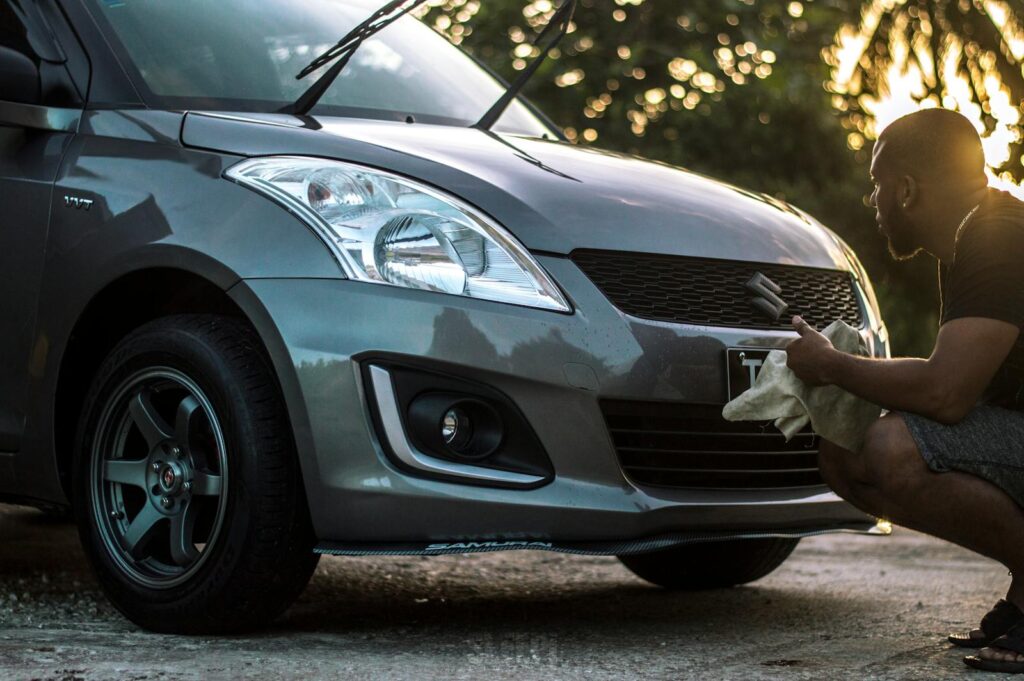
6. **Deep Cleaning Interior Upholstery and Carpets**Once a prospective buyer transitions from admiring your car’s exterior to stepping inside, the very last impression you want to convey is one that diminishes that crucial initial ‘wow’ factor. A cabin that is impeccably clean and exudes a fresh, inviting aroma doesn’t just feel good; it serves as a powerful, non-verbal affirmation that you have consistently treated the vehicle with an exemplary level of care and respect. This interior presentation is often the deciding factor that converts interest into a serious offer, as it allows buyers to truly envision themselves as the new owner.
The deep cleaning process for upholstery and carpets begins with a fundamental but critical step: the thorough removal of all clutter and any accumulated trash. Clearing out personal items and meticulously vacuuming up every trace of loose debris is paramount, as buyers need an uncluttered space to mentally project themselves into the car. Distractions only serve to detract from this important visualization. For fabric seats, a specialized carpet or upholstery cleaner should be applied, ideally followed by a hot-water extractor if one is available. This combination penetrates deep into the fibers, lifting embedded dirt and stains for a truly deep clean.
Carpets and floor mats, particularly those in high-traffic zones like the driver’s side, demand extra attention. Stubborn stains should be targeted with a pretreatment to maximize their removal efficacy. If your vehicle features leather seats, the process shifts slightly: first, apply a pH-balanced leather cleaner to gently but effectively remove grime, and then follow with a high-quality conditioner to keep the leather soft, supple, and prevent cracking. Cracked or overly shiny leather often signals neglect, acting as a significant red flag for potential buyers and negatively impacting their perception of the car’s overall condition. A meticulously cleaned and conditioned interior conveys luxury and care.
Read more about: 10 Essential Strategies: Keeping Your Off-Road Truck’s Interior Spotless After Every Adventure

7. **Detailing the Dashboard, Trim, and Electronics**The dashboard, alongside the interior trim and integrated electronics, constitutes one of the most visible and frequently interacted-with areas from behind the wheel. Therefore, the meticulous detailing of these components is absolutely essential in solidifying a positive buyer impression and contributing significantly to the overall perceived quality of your vehicle. A neglected dashboard, replete with dust and grime, can quickly negate the positive impact of an otherwise clean interior, signaling a lack of comprehensive care.
Begin the process by thoroughly dusting and vacuuming. A soft-bristle brush, paired with either a powerful vacuum attachment or compressed air, is ideal for reaching into those often-overlooked nooks and crannies: the air vents, tight seams, and the intricate areas surrounding switches and buttons. This meticulous attention to detail ensures that no dust bunnies or crumbs remain hidden, giving the entire cockpit a pristine and inviting feel. Neglecting these small areas can make the entire interior feel less cared for, even if the larger surfaces are clean.
Special care must be given to infotainment systems and digital displays, as these are often sensitive and prone to damage from harsh chemicals. Always use a soft microfiber towel in conjunction with an electronics-safe cleaner specifically designed for screens. Critically, avoid any ammonia-based products, as they can cause irreparable damage to sensitive surfaces and anti-glare coatings. For plastic or vinyl dashboards and door panels, select a high-quality protectant that is non-greasy and offers crucial UV protection. The goal here is a sophisticated matte finish rather than a shiny, reflective sheen, which can appear cheap and attract glare. This thoughtful application not only enhances appearance but also protects against sun damage and wear, preserving the material’s integrity for years to come.
Read more about: The Essential Checklist: 13 Crucial Questions to Ask Before Investing in a Used Vehicle with Advanced Driver-Assistance Systems
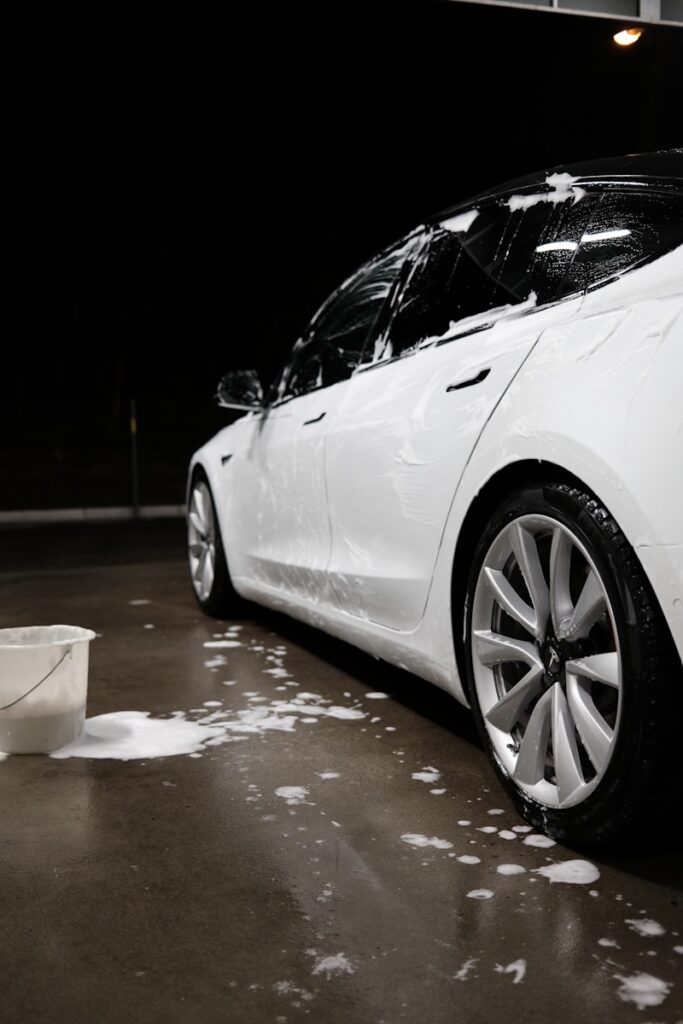
8. **Odor Removal and Air Quality**Once the visual aspects of your car’s interior are pristine, the olfactory experience becomes paramount. Lingering, unpleasant smells—whether from smoke, pets, or spilled food—can instantly become a significant deal-breaker for potential buyers, effectively sabotaging all your previous detailing efforts. An interior that smells fresh and clean doesn’t just feel pleasant; it sends a powerful, subconscious message that the vehicle has been diligently cared for.
To tackle stubborn odors, simply masking them with air fresheners isn’t enough; true odor neutralization is required. Enzyme-based cleaners are particularly effective at breaking down organic residues that cause bad smells, rather than just covering them up. For deeply embedded or persistent odors, professional solutions like an ozone treatment may be necessary. This process uses ozone gas to oxidize and destroy odor-causing molecules, leaving the cabin truly scent-neutral.
Beyond tackling existing odors, proactive measures can significantly improve interior air quality. A quick and impactful fix is the regular replacement of your cabin air filter. A musty or clogged filter can recirculate stale air and allergens, detracting from the fresh feeling you’re aiming for. A clean filter ensures healthier, fresher air circulates, allowing potential buyers to truly imagine driving off in a comfortable, inviting, and meticulously cared-for vehicle, thereby significantly increasing the likelihood of a successful sale.
Read more about: 10 Essential Strategies: Keeping Your Off-Road Truck’s Interior Spotless After Every Adventure

9. **Headlight Restoration: Let There Be Light**Over time, car headlights can become cloudy, yellowed, or hazy due to oxidation from UV exposure and environmental contaminants. This not only detracts significantly from your car’s overall aesthetic appeal, making it appear older and less maintained, but critically, it also severely compromises nighttime visibility. Restoring them to their original clarity is a powerful visual upgrade that can dramatically lift your car’s exterior presentation.
The restoration process begins with meticulous sanding. You’ll need to wet-sand the headlight lens using a progression of increasingly fine grits of sandpaper, typically starting with a coarser grit like 800 and working your way up to 1500, then 2000. This systematic sanding effectively removes the damaged, oxidized layers, creating a smooth surface ready for the next step. It’s a patient process, but essential for proper rejuvenation.
Following sanding, the next crucial step is polishing. Utilizing a specialized plastic polish in conjunction with a dual-action polisher, or even a drill attachment, will effectively remove any remaining haze and bring back the lens’s inherent clarity. Once the lenses are clear and gleaming, the final, indispensable step is to apply a durable sealant or a UV-resistant protective film. This protective layer is vital for preventing future oxidation and ensures that the newly restored clarity lasts, adding a crisp, modern touch to your car and unequivocally demonstrating that no aspect of the vehicle’s maintenance was overlooked.
Read more about: The Science of Pristine: 12 Foundational Principles for Restoring Your Car’s Headlights to ‘Brand New’ Clarity

10. **Fixing Small Imperfections: Dents, Dings, and Scratches**While more extensive damage like deep paint scratches or substantial dents typically necessitates professional bodywork, a surprising number of minor imperfections can often be effectively addressed either at home or through specialized techniques. Proactively tackling these smaller flaws, even if they seem insignificant individually, can collectively make a significant difference in your car’s perceived condition and, consequently, its market value. Ignoring them can create an impression of neglect that detracts from an otherwise well-maintained vehicle.
One highly effective method for addressing minor dents is Paintless Dent Repair (PDR). This innovative technique involves trained technicians using specialized tools to meticulously massage the dents out from behind the affected panel. Crucially, this method skillfully restores the original shape of the metal without requiring any repainting, preserving the factory finish and avoiding the tell-tale signs of traditional bodywork, which is a major advantage for maintaining value.
For small chips or light scratches in the paint, matching touch-up paint can provide a discreet solution. The key to success with touch-up paint is careful and precise application, followed by gentle buffing once the paint has fully cured. This can effectively mask imperfections, making them far less noticeable. However, it’s important to strike a balance; small nicks may not drastically impact your sale price, so a pragmatic decision is needed on whether the cost and effort of repair are truly worth the potential boost in perceived value.

11. **Documentation and Transparency: Building Buyer Trust**Beyond merely enhancing your car’s physical appearance, a critical, often underestimated aspect of maximizing resale value is the meticulous documentation of all maintenance and detailing efforts. Providing a transparent and comprehensive history builds immense buyer confidence, acting as a powerful, non-verbal testament to the consistent care and attention the vehicle has received throughout its lifespan. This level of openness can significantly differentiate your car in a competitive market.
Prospective buyers are inherently reassured by solid proof of a vehicle’s upkeep. This means compiling all relevant service records, which should include details of recent oil changes, tire rotations, any major repairs undertaken, and even minor adjustments. Retaining all associated receipts and work orders, perhaps organized neatly in a dedicated folder, serves as tangible evidence of responsible ownership. This collection of documents provides a clear, verifiable timeline of the car’s mechanical health.
Furthermore, if you’ve invested in professional detailing services, presenting those detailing receipts unequivocally highlights your commitment to the car’s aesthetic upkeep. A simple spreadsheet or digital app tracking maintenance logs—detailing service dates, parts replaced, and mileage at the time of service—can further assure buyers that no critical maintenance steps have been missed. Being this transparent about your car’s history not only sets your vehicle apart from other sellers who may lack such records but also empowers you to answer any maintenance questions with undeniable credibility, fostering trust and peace of mind.
Read more about: Navigating Rare Car Sales: Top Platforms and Proven Strategies for Success
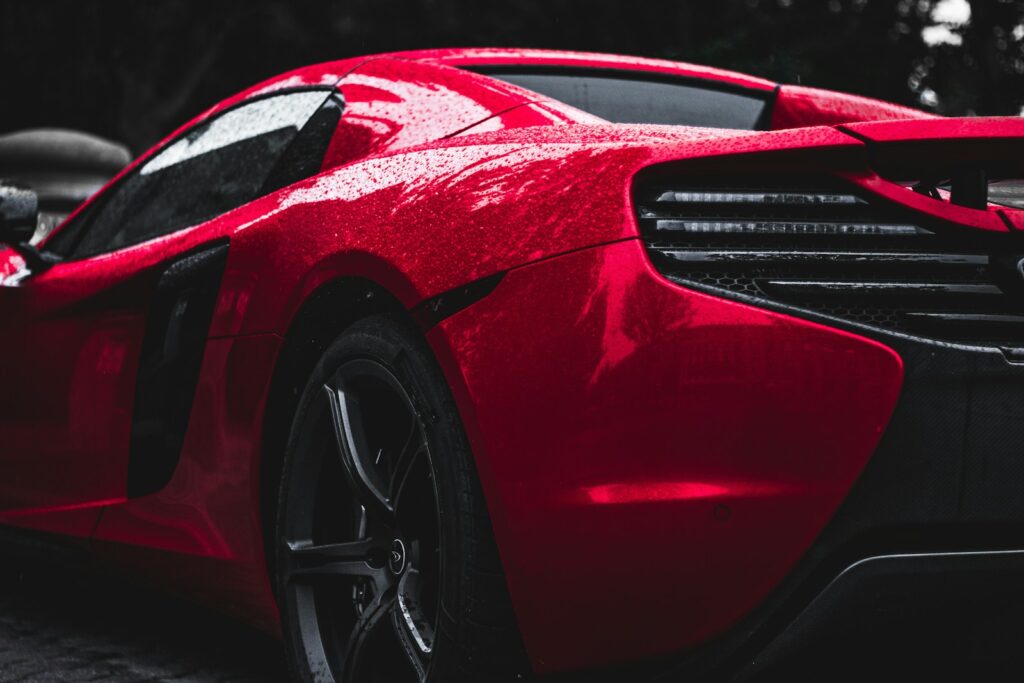
12. **The Financial Upside: ROI of Detailing**It is entirely natural for sellers to question whether the investment of time and money into comprehensive car detailing will genuinely yield a worthwhile return. However, in the vast majority of cases, a well-detailed car consistently demonstrates a notable and measurable return on investment. The enhanced visual appeal and documented care translate directly into tangible financial benefits when it comes time to sell.
Firstly, cars presented in a like-new condition, both inside and out, inherently command a higher asking price. Buyers are often willing to pay a premium for a vehicle that exudes meticulous care, as it suggests a deeper level of overall maintenance and reliability. A polished listing, featuring attractive, high-quality photos of a gleaming car, will invariably attract a larger volume of inquiries and, crucially, quicker offers, streamlining the selling process significantly.
Secondly, an immaculate vehicle leaves considerably less room for potential buyers to nitpick or leverage minor flaws as bargaining chips to drive down the price. When a car looks pristine, buyers perceive higher intrinsic value, which often translates into reduced haggling and a smoother negotiation. Ultimately, a relatively small upfront investment in thorough detailing can lead to a substantially higher final sale price, often well exceeding the initial cost of the detailing itself, effectively putting more money directly into your pocket.
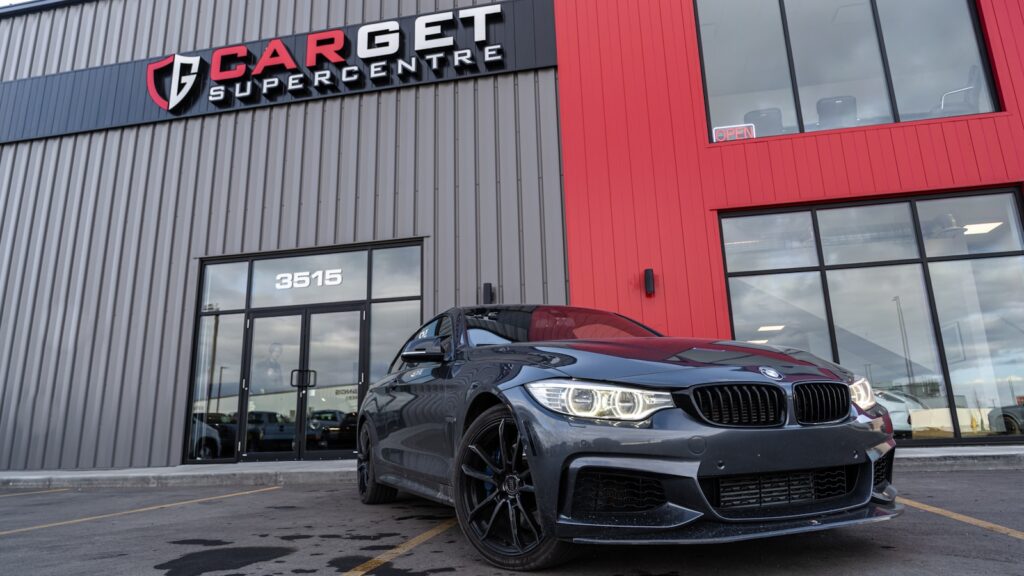
13. **Professional vs. DIY: Choosing the Right Approach**As you embark on the journey of preparing your car for sale, a fundamental decision arises: should you undertake the detailing process yourself, or is it more advantageous to enlist the expertise of professionals? Both approaches offer distinct advantages and disadvantages, and the optimal choice often hinges on your personal skill set, available time, and desired outcome.
Opting for the DIY route presents several appealing benefits. The most obvious is significant cost savings, as you only incur expenses for the necessary products and tools, eliminating labor fees. Moreover, for many car enthusiasts, there’s immense personal satisfaction derived from the hands-on process and the tangible sense of accomplishment that comes with transforming their vehicle. However, DIY detailing can be incredibly time-intensive, potentially consuming hours, or even days, especially for newcomers. There’s also a steep learning curve; improper techniques or the use of low-quality products can unfortunately lead to swirl marks, subpar results, or even accidental damage, inadvertently diminishing your car’s value.
Conversely, professional detailing services offer their own compelling advantages. Professionals bring a wealth of expertise and are equipped with high-grade polishers, specialized chemicals, and extensive experience in tackling challenging tasks and imperfections that might overwhelm an amateur. This translates to superior results, often achieved with greater efficiency. However, quality detailing services are not inexpensive, representing a considerable financial outlay. Additionally, you’ll need to arrange an appointment and be prepared to be without your car for the duration of the service, which requires careful scheduling.
For many sellers, particularly when aiming for that coveted showroom finish or when dealing with complex tasks like paint correction, a hybrid approach often makes the most sense. Engaging professionals for these intricate stages can ensure flawless results that maximize perceived value, especially if you’re operating within a tight timeframe for sale. For less technical aspects, a DIY approach can supplement professional work and keep costs manageable.

14. **Preparing for Test Drives and Showings**You’ve invested meticulously in detailing your vehicle, bringing it to a near-perfect state. Now, the final, crucial step is ensuring it maintains this pristine condition and presents flawlessly during test drives and showings until the moment of sale. The ongoing effort to keep your car immaculate reinforces the message of diligent care and maximizes its appeal to serious buyers.
Practical steps for maintaining cleanliness involve careful driving; whenever possible, avoid driving on dirty or muddy roads. Keep a quick detail spray and a clean microfiber towel handy to swiftly remove any dust, fingerprints, or minor smudges that might accumulate, particularly from curious passersby or during preliminary inspections. Beyond cleanliness, anticipating buyer questions is key. Have all your documentation—service history, accident reports, and details of any customizations—readily accessible to answer inquiries about mechanical history or ownership transparency with confidence.
Providing a truly polished experience during test drives extends beyond just aesthetics. Ensure the interior continues to smell fresh and remains entirely free from any clutter. Double-check tire pressure and fluid levels before each showing to guarantee the car drives smoothly and feels responsive, signaling mechanical readiness. Finally, strategic parking is vital: always meet potential buyers in a well-lit, open area. Good lighting naturally highlights your car’s best features, allowing its revitalized beauty to shine, and openly demonstrates that you have absolutely nothing to hide.
**Conclusion: Driving Towards a Better Sale**
Prepping your car for sale is a strategic endeavor, entirely focused on showcasing its absolute best qualities, encompassing both its visual allure and its mechanical integrity. By thoughtfully investing your time and, where necessary, some financial resources into a thorough detailing process, you communicate a powerful and undeniable message to every potential buyer: this car has been cared for with meticulous attention and genuine pride. Every step, from the gleaming, corrected exterior and the crystal-clear, restored headlights, to the fresh, inviting interior and the meticulously organized documentation, works in concert to diminish buyer hesitation and to consistently invite stronger, more confident offers.
Read more about: Unlock Urban Savings: Your Ultimate Lifehacker’s Guide to Frugal Living in Expensive US Cities
While the satisfaction of a do-it-yourself detailing project is undeniable, particularly if you possess the patience and technical know-how, intelligently partnering with professionals for more complex and impactful tasks—such as advanced paint correction or intricate interior restoration—can often lead to even more impressive returns on your investment. Ultimately, a comprehensively detailed vehicle doesn’t merely sell faster; it actively attracts superior offers, translating directly into more money in your pocket and ensuring a remarkably smoother, more satisfying transaction for all involved. Make detailing a non-negotiable cornerstone of your selling strategy, and you will undoubtedly reap the abundant rewards when the perfect buyer comes along, eager to drive away in a car that truly shines.

